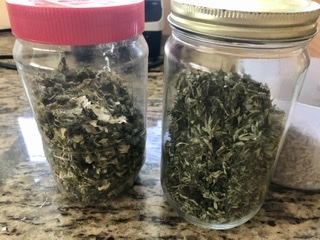It’s like having kids. A day neglected can spell disaster. You can’t leave home either without finding someone to look after them...We got fruit trees!
It all started with Figgie. Figgie is a fig tree that came into our life last year late in October 2019 after being dug up from the spot where a playground was being built. Figgie has more than tripled in size since then. Fig trees do especially well in this area, making a good fit.
But then Figgie looked lonely sitting on an acre of pasture with no other trees in sight, so it was off to the local nursery. Coming home with us was Chitra, a satsuma mandarin orange tree,
Parijata, a pear tree,
and Phalla (Sanskrit for "fruit"), a peach tree.
Chitra has tripled in size since then. Pari and Phalla were doing really well, too, all spring and summer until recently they started losing leaves and so are looking a bit thin. We’ll need to contact the extension office for help to identify what’s going on.
Meanwhile, after the above were being planted, a neighbor had offered some blueberry runners we could dig up and also plant. We got a couple (Nila and Syama), and then bought two other blue berry bushes (Tippie and Prema) from the nursery because blueberries do best when there are different varieties growing nearby.
Another thing about having different varieties is you can choose ones that produce at different times of year to extend the harvest.
Not long afterwards we acquired another pear tree when we found out pears do best in pairs. Of differing variety. Paramahamsa is a pineapple pear from a Walmart nursery.
Para is still very young but did an amazing job growing not one, not two, but three new lower branches, thanks to a method taught on YouTube called "notching". That's because Para had branches missing on one side but now more balance has been created.
And note how the young branches have weights hanging on them and Pari above has branches tied down. This is called "training a tree" to grow outward for easier access to future fruit because pear trees have a tendency to grow straight up. And training is the gentler method compared to pruning or actually cutting a tree. But it's not that we don't want to prune; pruning is also a way for shaping a tree. And also for taming its growth, perhaps similar to training children to behave a certain way rather than let them grow wild and only do what they want.
Pruning, however, should be a last resort for shaping a tree. It is best done to remove any dead or interior-growing rather than exterior-growing branches in order for sufficient light and sunshine to come in. Also before pruning nursery trees, they need to get established first, which means no unnecessary cutting until the first year after planting. And fruit is also removed prematurely, so the trees can focus on root development.
Young trees called whips or "bare roots" are a whole different story. For various reasons, they are pruned right after planting and rather shockingly, for the inexperienced (Which is why others prefer notching). We have yet to try raising a fruit tree from the whip stage of life.
As we learned more about proper pruning, we noticed, however, that all the trees from both the local nursery and the Walmart nursery had suffered from terrible pruning done to them while potted. Whoever pruned, did it either to cram the trees together to save space while being sold or didn't know what they were doing because the cuts were done in all the wrong places.
In any case, other additions to the yard have been three loquats and two avocados grown from seed and another loquat and a camphor tree given as gifts. Meet Lokanath, one of the loquats here, gradually rising over the horizon.

And this is Avadhuta, one of the avocados, still so very young.
It has been quite an adventure, with so much to absorb. Another thing is how Krishna made each variety of trees and plants with specific needs. And how especially when they are young and just getting established they need a lot of TLC. After that initial period, things should get easier. Over time we hope to post for future reference what we discover for each variety growing here, along with useful links.
To be continued...




















































